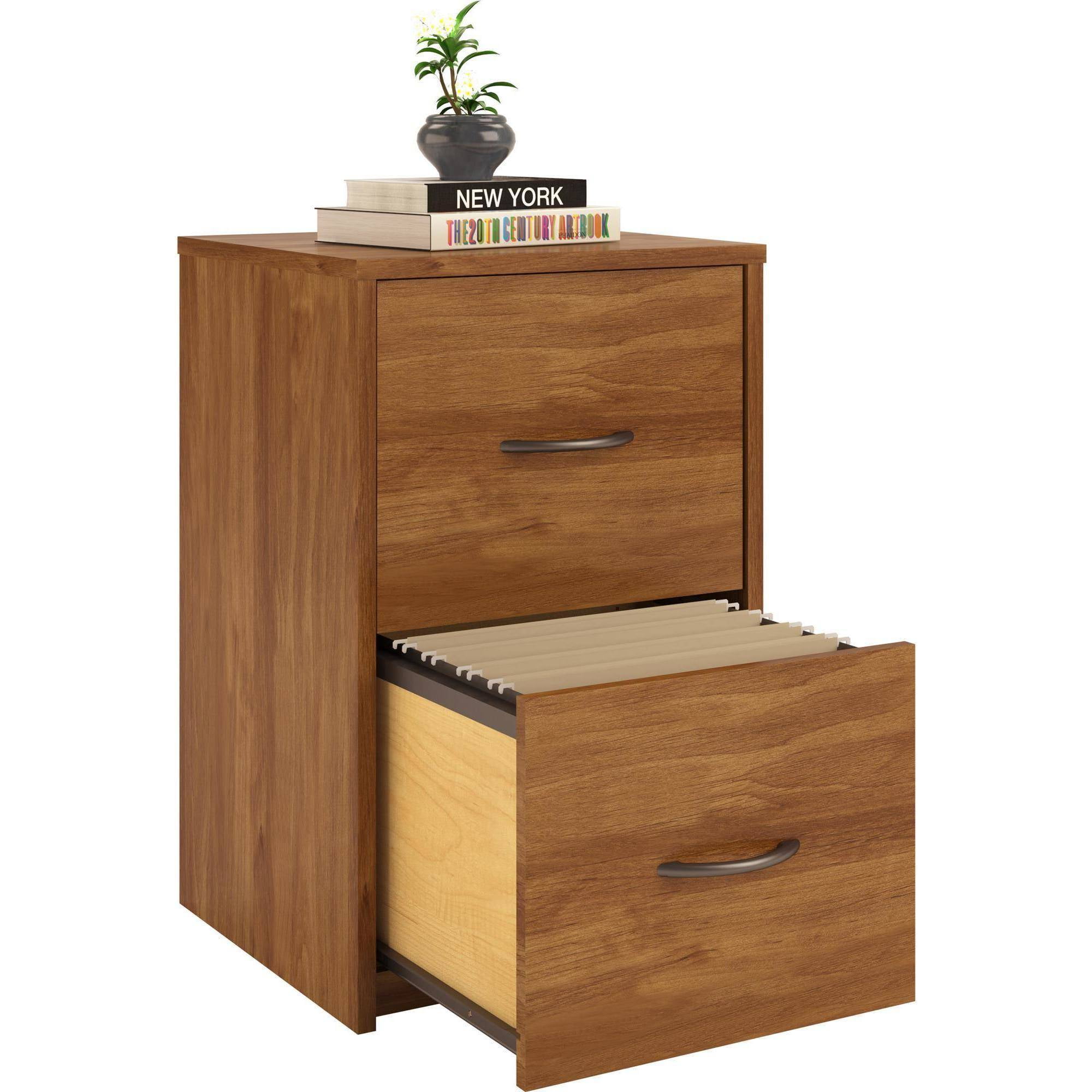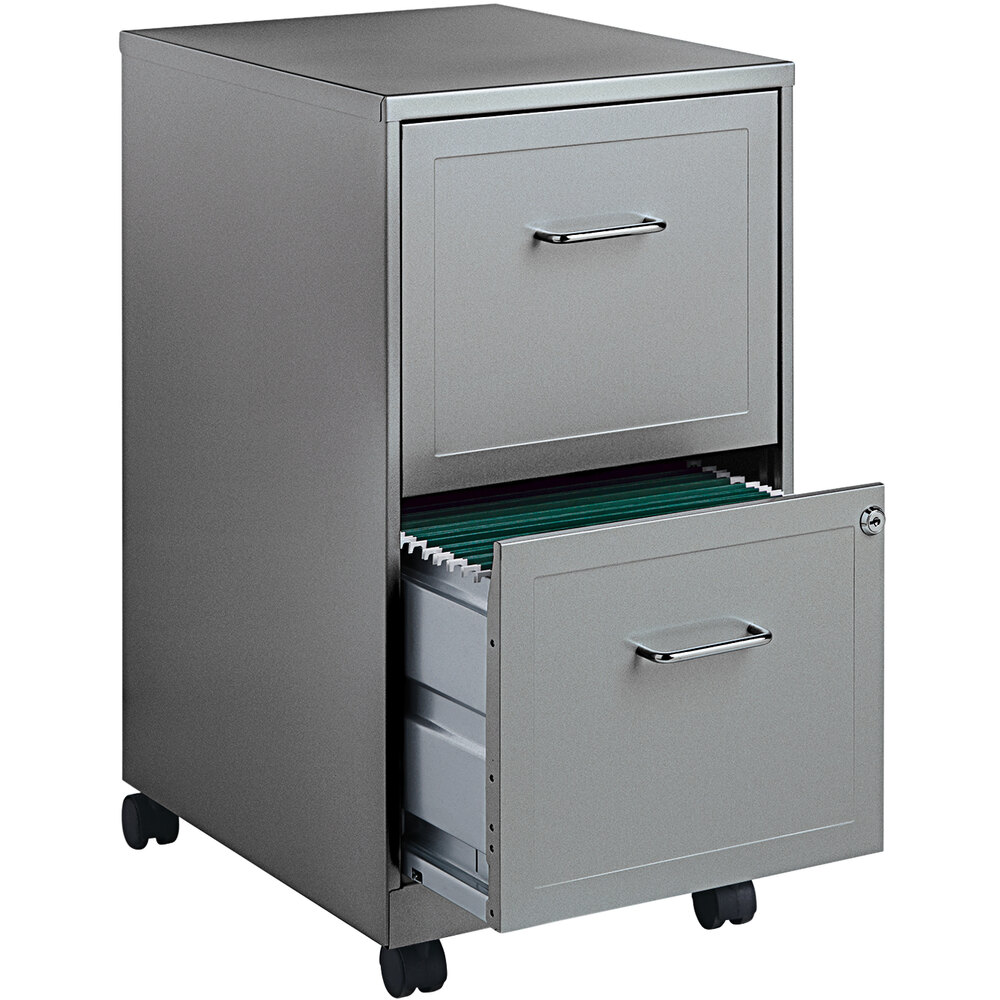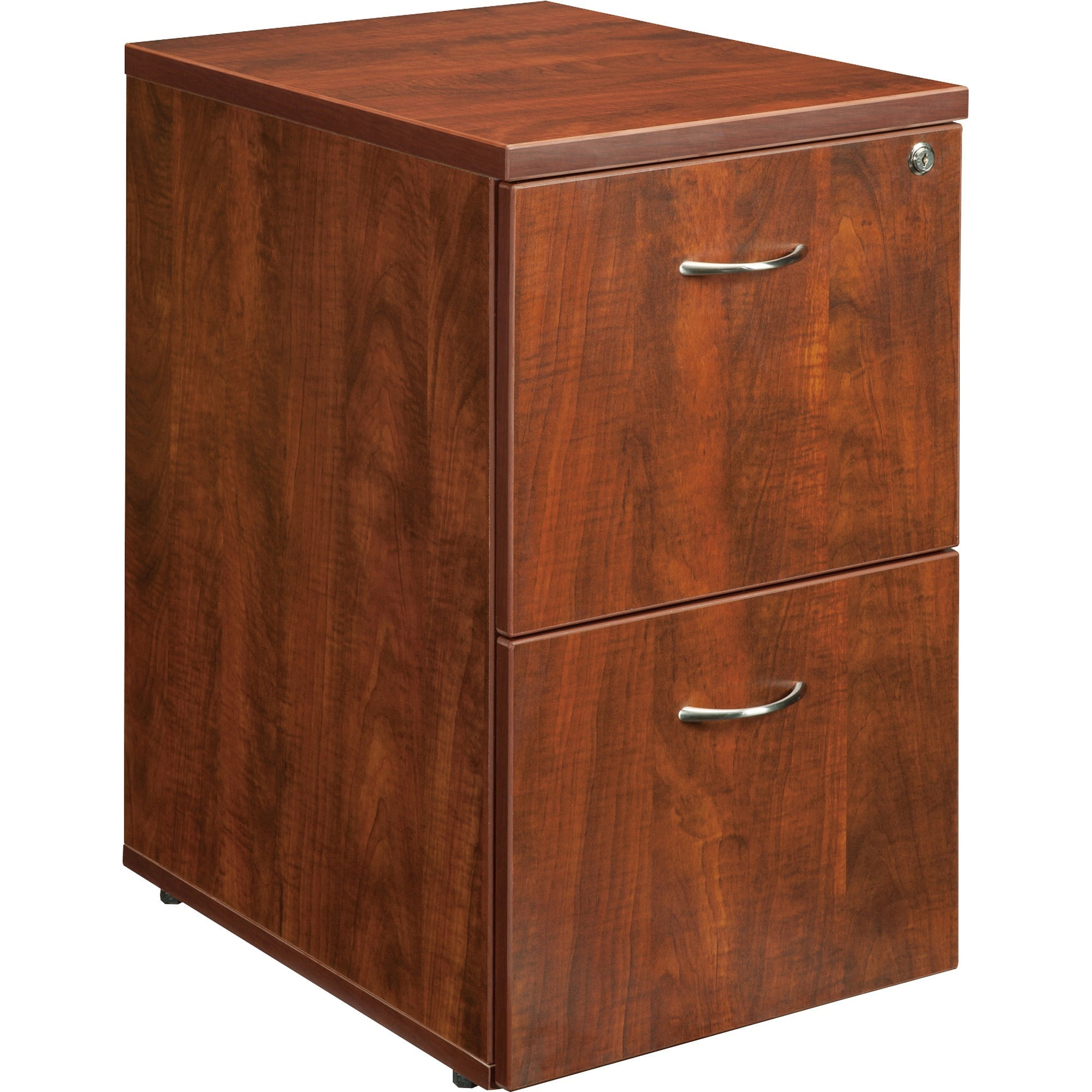Vintage 2 Drawer File Cabinet

The enduring appeal of vintage file cabinets lies in their blend of functionality and aesthetic charm. These sturdy pieces of furniture, often crafted from durable materials and imbued with timeless designs, offer a unique combination of practicality and visual appeal. They seamlessly integrate into various settings, from home offices to modern lofts, adding a touch of history and character to any space.
Design Features and Comparison, Vintage 2 drawer file cabinet
Vintage file cabinets, in contrast to their modern counterparts, often showcase a distinct set of design features that reflect the craftsmanship and aesthetic sensibilities of their era. Vintage file cabinets are frequently constructed from solid wood, metal, or a combination of both, emphasizing durability and longevity. The meticulous craftsmanship evident in these pieces, including intricate detailing, robust hardware, and well-proportioned structures, stands in stark contrast to the mass-produced, streamlined designs of modern file cabinets. Vintage file cabinets often feature distinctive hardware, such as ornate drawer pulls, keyholes, and sturdy hinges, adding a touch of elegance and sophistication.
The styles of vintage file cabinets vary widely, reflecting the prevailing trends of their time. Some popular styles include Art Deco, Mid-Century Modern, and Industrial, each showcasing distinct design elements. Art Deco file cabinets often feature geometric patterns, bold colors, and sleek lines, while Mid-Century Modern pieces embrace clean lines, organic shapes, and a focus on functionality. Industrial file cabinets, characterized by their rugged construction and exposed hardware, often utilize reclaimed materials and emphasize a utilitarian aesthetic.
Examples of Sought-After Designs
Vintage file cabinets have become highly sought-after by collectors and enthusiasts, with certain designs particularly prized for their historical significance, craftsmanship, and aesthetic appeal.
- Art Deco File Cabinets: These cabinets, often featuring intricate metalwork and geometric patterns, are highly sought after for their unique style and historical significance. Examples include file cabinets manufactured by the American Metal Products Corporation (AMPCO) in the 1920s and 1930s.
- Mid-Century Modern File Cabinets: These cabinets, characterized by their clean lines, organic shapes, and functionality, are highly prized for their minimalist aesthetic and timeless appeal. Examples include file cabinets designed by renowned designers such as Eero Saarinen and George Nelson.
- Industrial File Cabinets: These cabinets, often crafted from reclaimed materials and featuring exposed hardware, are highly sought after for their rugged aesthetic and industrial charm. Examples include file cabinets manufactured by companies like Herman Miller and Knoll in the mid-20th century.
Historical Context
Vintage file cabinets have a rich history, evolving alongside the changing needs and aesthetic preferences of society. The early 20th century saw the emergence of file cabinets as essential pieces of office furniture, with designs reflecting the prevailing architectural and industrial trends of the time.
- Early 20th Century: The early 20th century witnessed the rise of file cabinets as essential office furniture. Early designs often featured simple, utilitarian structures made from wood or metal. These cabinets were designed primarily for functionality, with a focus on storage and organization.
- Mid-20th Century: The mid-20th century saw a shift in design aesthetics, with the emergence of modernism and the embrace of new materials. This era witnessed the creation of iconic file cabinets that combined functionality with sleek, minimalist designs. The introduction of new materials like steel and plastic allowed for greater flexibility in design and production.
- Late 20th Century and Beyond: The late 20th century saw the rise of mass production and the development of more affordable file cabinets. However, vintage file cabinets continued to be prized for their craftsmanship, durability, and unique designs. The growing interest in vintage furniture and home décor has led to a renewed appreciation for these timeless pieces.
The Appeal of Vintage File Cabinets: Vintage 2 Drawer File Cabinet

Vintage file cabinets offer a compelling blend of functionality and style, making them a desirable choice for both practical organization and aesthetic enhancement. These sturdy pieces of furniture, often crafted from durable materials like metal or wood, provide a reliable and elegant solution for storing and accessing important documents, files, and other essential items.
The Practical Benefits of Vintage File Cabinets
Vintage file cabinets provide numerous practical advantages for organization and storage. Their robust construction ensures durability and longevity, capable of withstanding the test of time and heavy use. The spacious drawers offer ample room for storing files, folders, and other office supplies, while the often-included locking mechanisms provide security for sensitive documents.
- Organization: Vintage file cabinets offer a structured and efficient system for organizing files, folders, and documents. Their multiple drawers allow for compartmentalization, making it easy to locate specific items quickly.
- Storage: Vintage file cabinets provide ample storage space for various items, including office supplies, stationery, and personal belongings. Their sturdy construction ensures that items are securely stored and protected from damage.
- Security: Vintage file cabinets often feature locking mechanisms, providing an extra layer of security for sensitive documents and valuable items. This feature is particularly beneficial for home offices and businesses that require secure storage solutions.
The Versatility of Vintage File Cabinets
Vintage file cabinets are incredibly versatile, seamlessly integrating into diverse settings and design aesthetics. Their timeless appeal and robust construction make them suitable for a range of applications, from home offices and workshops to studios and creative spaces.
- Home Offices: Vintage file cabinets add a touch of character and functionality to home offices. Their classic design complements various décor styles, from minimalist to traditional, while their ample storage space keeps essential documents and supplies organized.
- Workshops: Vintage file cabinets provide a practical and stylish solution for storing tools, supplies, and project materials in workshops. Their sturdy construction can handle heavy items, while their drawers offer organized storage for smaller tools and components.
- Studios: Vintage file cabinets are a popular choice for artists, musicians, and designers who require storage for their creative materials and projects. Their versatile design allows for storing canvases, art supplies, instruments, and other essential items.
Key Features of Vintage File Cabinets
The functionality of vintage file cabinets is enhanced by several key features that contribute to their efficiency and practicality.
- Drawer Size: Vintage file cabinets often feature spacious drawers that can accommodate standard letter-sized files, folders, and other office supplies. The size of the drawers varies depending on the model and age of the cabinet, but generally provides ample storage space.
- Weight Capacity: Vintage file cabinets are designed to handle significant weight, ensuring that they can support heavy files and documents without collapsing or warping. The weight capacity varies depending on the construction materials and the model of the cabinet.
- Locking Mechanisms: Many vintage file cabinets feature locking mechanisms, providing an extra layer of security for sensitive documents and valuable items. The locking mechanisms vary in design and complexity, with some cabinets offering simple key locks while others feature more sophisticated security features.
Incorporating Vintage File Cabinets into Interior Design
Vintage file cabinets seamlessly integrate into diverse interior design styles, adding a touch of vintage charm and functionality to any space. Their timeless appeal and robust construction make them suitable for a range of décor styles, from minimalist to traditional.
- Minimalist: Vintage file cabinets can complement a minimalist interior by providing a functional and visually appealing storage solution. Opt for a sleek and streamlined model with clean lines and a neutral color palette to maintain a minimalist aesthetic.
- Traditional: Vintage file cabinets can enhance the warmth and elegance of a traditional interior. Choose a model with intricate details, ornate hardware, and a rich wood finish to complement the existing décor.
- Industrial: Vintage file cabinets can add a touch of industrial chic to a contemporary space. Opt for a model with a distressed metal finish, exposed hardware, and a utilitarian design to complement the industrial aesthetic.
Finding and Restoring Vintage File Cabinets

Vintage file cabinets offer a unique blend of functionality and charm, adding a touch of nostalgia to any workspace or home office. Finding and restoring these pieces can be a rewarding experience, allowing you to give new life to forgotten treasures and create personalized, one-of-a-kind pieces. This section will explore the best places to find vintage file cabinets, provide tips for authenticating them, and offer a guide to restoring them to their former glory.
Finding Vintage File Cabinets
Finding vintage file cabinets is an adventure that can take you to various locations, each offering a unique selection of pieces.
- Antique Shops: Antique shops are excellent places to find vintage file cabinets, as they often specialize in curated collections of vintage furniture and decor. These shops are typically well-stocked with pieces from different eras, ensuring a diverse selection to choose from.
- Flea Markets and Estate Sales: Flea markets and estate sales are treasure troves of vintage finds, offering a chance to discover unique pieces at affordable prices. These events are often held on weekends and offer a more casual browsing experience, allowing you to uncover hidden gems.
- Online Marketplaces: Online marketplaces, such as eBay and Etsy, offer a vast selection of vintage file cabinets, allowing you to browse from the comfort of your own home. These platforms provide detailed descriptions and images, allowing you to carefully consider each piece before making a purchase.
Authenticating Vintage File Cabinets
When searching for vintage file cabinets, it is essential to be able to distinguish authentic pieces from reproductions. Authenticating vintage file cabinets requires a keen eye for detail and knowledge of vintage design styles.
- Construction: Vintage file cabinets are often constructed from sturdy materials such as solid wood or metal, with meticulous craftsmanship and attention to detail. Examine the cabinet’s construction, looking for signs of quality craftsmanship, such as dovetail joints, hand-painted finishes, or intricate hardware.
- Hardware: Vintage file cabinets often feature unique hardware, such as brass or metal handles, keyholes, and drawer pulls. These hardware pieces can provide valuable clues about the cabinet’s age and origin.
- Style: Vintage file cabinets often reflect the design styles of their era. For example, Art Deco file cabinets might feature geometric patterns and bold colors, while Mid-Century Modern file cabinets might feature clean lines and minimalist designs.
Restoring Vintage File Cabinets
Restoring vintage file cabinets can be a rewarding experience, breathing new life into a piece of history. Restoring a vintage file cabinet involves a series of steps, each requiring careful attention and technique.
- Cleaning: The first step in restoring a vintage file cabinet is cleaning it thoroughly to remove dirt, grime, and any previous finishes. Use a soft cloth and a mild cleaning solution to gently wipe down the cabinet’s exterior and interior.
- Refinishing: Refinishing a vintage file cabinet can involve stripping the existing finish, sanding the wood, and applying a new finish. This process can enhance the cabinet’s natural beauty and protect it from future damage.
- Repairing: Vintage file cabinets may require minor repairs, such as fixing loose drawers, replacing broken hardware, or filling in any cracks or holes.
Challenges and Rewards of Restoring Vintage File Cabinets
Restoring vintage file cabinets can be a challenging but rewarding endeavor.
- Challenges: Restoring vintage file cabinets can be time-consuming and require specialized tools and techniques. Finding the right materials and finishes can also be a challenge, especially for older pieces.
- Rewards: The rewards of restoring vintage file cabinets are numerous. Not only will you have a unique and personalized piece of furniture, but you will also have the satisfaction of bringing a piece of history back to life.
Okay, so you’re digging that vintage 2 drawer file cabinet, but let’s be real, it’s about as spacious as a shoebox. Need something a little more substantial? Maybe a 55 inch wide cabinet would do the trick. You could fit all your old tax returns, your collection of vintage cassette tapes, and maybe even a small hamster in there! Just sayin’.
But hey, if you’re going for that retro vibe, that 2 drawer file cabinet definitely has a certain charm.
Remember those vintage 2 drawer file cabinets? You know, the ones that looked like they were designed by a committee of hamsters? Well, they’re quaint, but for serious storage, you need something with a little more oomph. Consider the lakeville double wide cabinet , which is like a vintage file cabinet’s much more sophisticated cousin.
It’s got the space, the style, and maybe even a built-in coffee maker, who knows? Just don’t tell the vintage file cabinets, they might get jealous.
